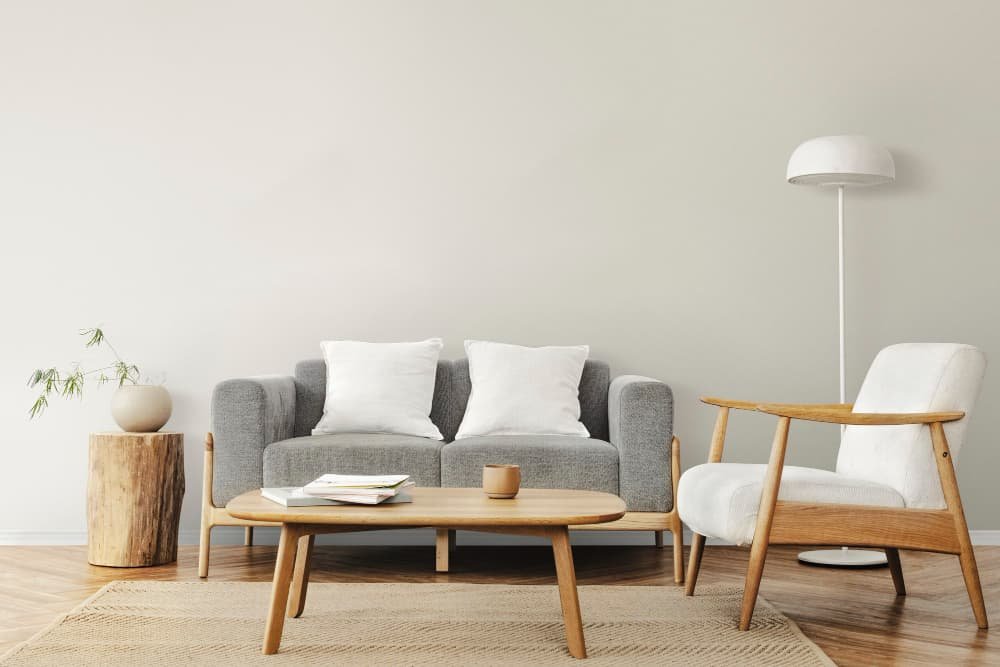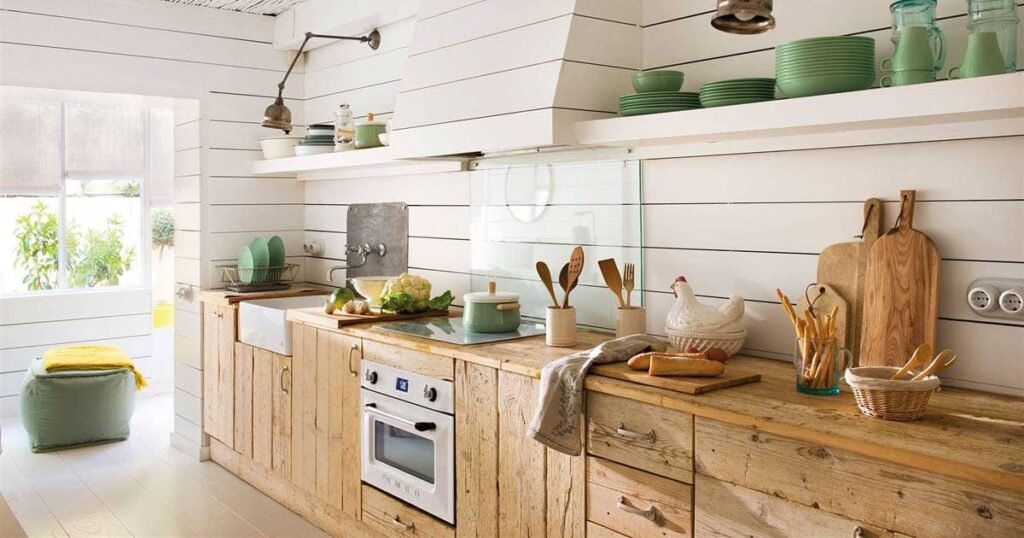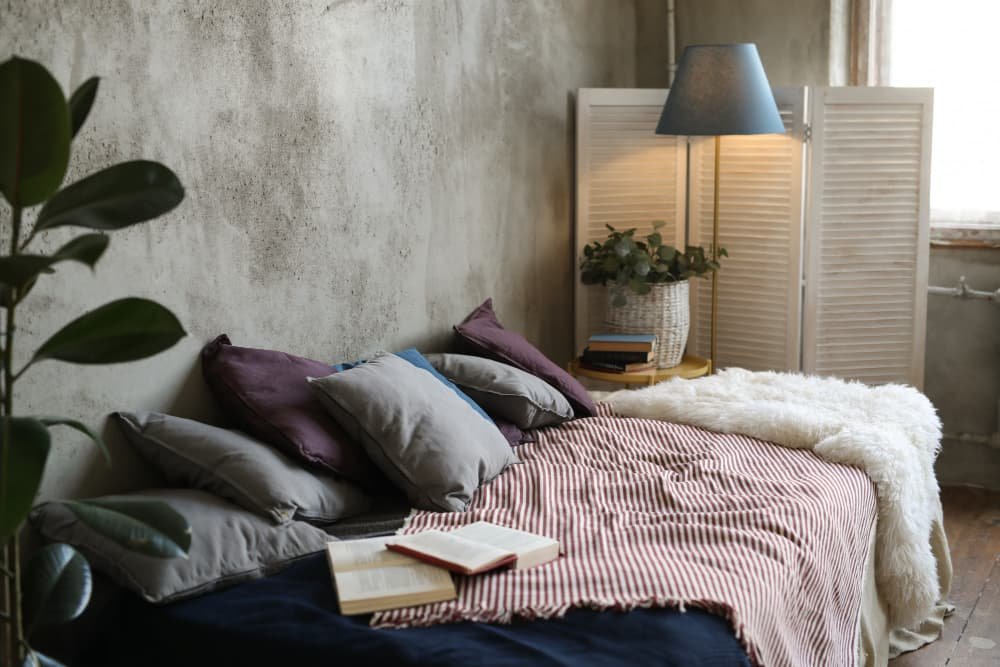Sustainable decoration is not just a passing trend; it is a necessity that responds to the urgency of caring for our planet. This approach to interior design is based on principles that minimise environmental impact, optimise the use of resources and create healthy, balanced spaces. In this article, we will explore in depth what sustainable decoration is, how to implement it in your home and the current trends that are leading the way to a greener future in interior design.
What is sustainable decoration?
Sustainable decoration involves the use of materials and practices that are environmentally responsible. It involves designing and decorating spaces in ways that reduce environmental impact, promote energy efficiency and use renewable resources. This approach also considers the health and well-being of the people who inhabit these spaces, creating environments that are not only aesthetically pleasing, but also healthy and environmentally friendly.
How to generate a sustainable space?
Creating a sustainable space goes beyond simply choosing furniture made from eco-friendly materials. It involves a holistic approach that encompasses material selection, efficient energy management, and consideration of the life cycle of the products we use. Below, we break down the key elements of achieving sustainable interior design.
Creating a healthy space
A healthy space is fundamental in sustainable decoration. Such environments are not only better for the planet, but also for the people who live in them. Making the most of natural light and ensuring good ventilation are two pillars of this approach. Opening windows and doors to allow air to flow freely counteracts humidity and prevents the proliferation of mould and mildew. In addition, using light colours on walls can increase light reflection, reducing the need for artificial lighting during the day and creating a more open and airy atmosphere.
Environmental impact
The environmental impact of the materials and products we choose for our homes is another vitally important aspect. Sustainable decoration seeks to minimise this impact through the use of renewable and local materials. The use of renewable furniture is essential, and opting for materials such as certified wood and natural fibres not only reduces the carbon footprint, but also supports the local economy by reducing emissions from transporting materials from distant countries. It is also essential to consider the durability of the products we use, as long-lasting products generate less waste over time.
Optimising energy use
Energy efficiency is another pillar of sustainable decoration. The use of renewable energies and the optimisation of natural light are recommended practices to reduce energy consumption in the home. Here we could highlight the use of home automation technology, which automates the switching on and off of lights according to the amount of natural light available, helping to avoid wasting energy unnecessarily. In addition, LED lighting stands out as a superior option for its long life and energy efficiency, as it does not give off heat energy and helps to keep spaces cool, reducing the need for additional ventilation.
Upcycling
Upcycling is a trend in sustainable decoration that goes beyond traditional recycling. It is about transforming objects that could be considered waste into new and valuable products. This practice is not only a creative way to decorate, but it also reduces the demand for new raw materials and extends the useful life of materials, contributing to sustainability in a significant way.
Current trends in sustainable decoration
Sustainable decoration is also constantly evolving, with new trends that combine aesthetics, functionality and respect for the environment. Here are some of the most important current trends in this field.
Japandi style

The Japandi style combines the simplicity of Japanese design with the warmth of Scandinavian style. This minimalist approach focuses on functionality and the choice of natural materials, such as wood and bamboo, which are durable and renewable. The philosophy behind Japandi is to create serene and orderly spaces that promote peace and well-being, using only the essentials and avoiding waste.
Raw Style
 Source: elmueble.com
Source: elmueble.com
Raw style is characterised by the use of materials in their most natural and untreated state. This rustic and authentic approach prioritises sustainability by avoiding intensive industrial processes that could damage the environment. Unpolished wood, natural stones and undyed fabrics are key elements in this style, which seeks a closer connection with nature.
Nature at home
Integrating nature into interior spaces is a trend that continues to gain popularity. Indoor plants, vertical gardens and decorative elements that mimic natural forms not only improve air quality, but also create a relaxing and harmonious atmosphere. This biophilic approach aligns perfectly with the principles of sustainable decoration, as it promotes the use of natural materials and encourages connection with the environment.
Sustainable textiles

The use of sustainable textiles, such as organic cotton, linen and hemp, is fundamental to sustainable decoration. Not only are these materials biodegradable, but they also require less water and pesticides in their production. In addition, choosing ethically produced textiles ensures that workers are treated fairly, aligning the aesthetics of your home with socially and environmentally responsible values.
As you can see, interior design is more than a fashion, it is a vision that seeks to combine style and respect for the environment. If you are in Malaga and are looking to transform your home into a sustainable space at the forefront of design, at Vika we are your perfect ally, visit us and discover how we can make your sustainable decoration project a reality!

CEO de Vika Interior Design. Diseñador de interiores con 10 años de experiencia en proyectos de interiorismo y dirección de obra y amueblamiento. Con estudio de diseño interior desde 2014 dedicados a realizar proyectos en viviendas locales y oficinas.
0 Comments